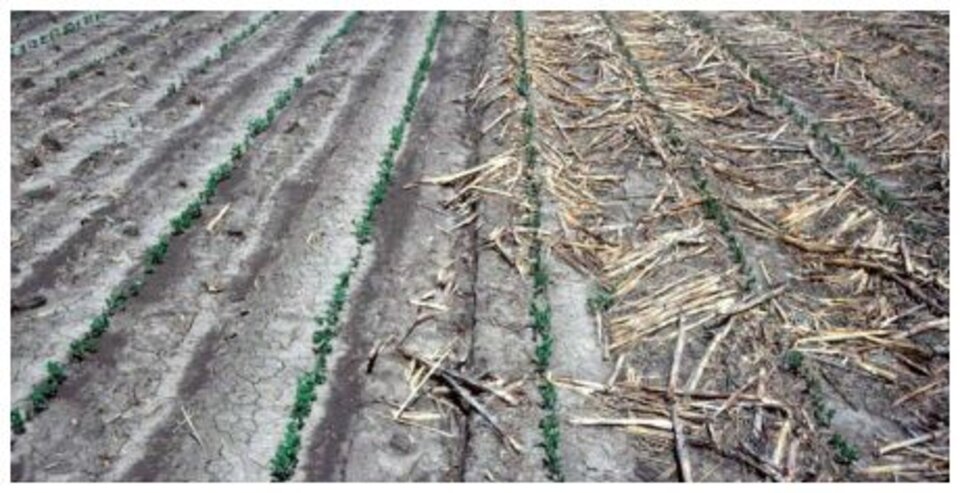Tillage Concepts

Tillage of the soil has been used to prepare a seedbed, kill weeds, incorporate nutrients, and manage crop residues. The goal of the tillage system has been to provide a proper environment for seed germination and root growth for crop production.
Throughout the years, tillage systems have changed as new technologies have become available and the costs of fuel and labor increased. With adoption of reduced tillage systems, many producers are realizing the negative effects of tillage as they see the soil and water conservation benefits of leaving the residue on the soil surface. No-till crop production systems leave the most residue and often prove to be the most profitable methods of crop production.
Tillage breaks up soil structure and destroys residue.
With no-till, the improved soil structure and moisture conserving residue cover makes more water available for crop production by improving infiltration and decreasing evaporation from the soil surface.
- The tilled plot on the left has little soil structure, resulting in problems with soil crusting and crop emergence.
- The no-till plot on the right has a protective layer of residue which absorbs raindrop impact and reduces evaporation from the soil surface.
- The tillage has beat down the soil elevation on the left, compared to the no-till surface on the right, reducing the pore spaces in the soil profile.
Tillage concepts
- NebGuide: Choosing the Right Tillage System for Row Crop Production
- CropWatch (archived 2007): Long-term no-till outyields tilled comparisons
- CropWatch (archived 2007): Tips for no-tilling corn on corn
- No-till Notes by Mark Watson of NPNRD
- No-Tillage by Rolf Derpsch
Information presented within the soil & water management section of this Water Web site has been reviewed by University of Nebraska–Lincoln Cropping Systems Team members Richard Ferguson, Paul Jasa and Jim Schneider.